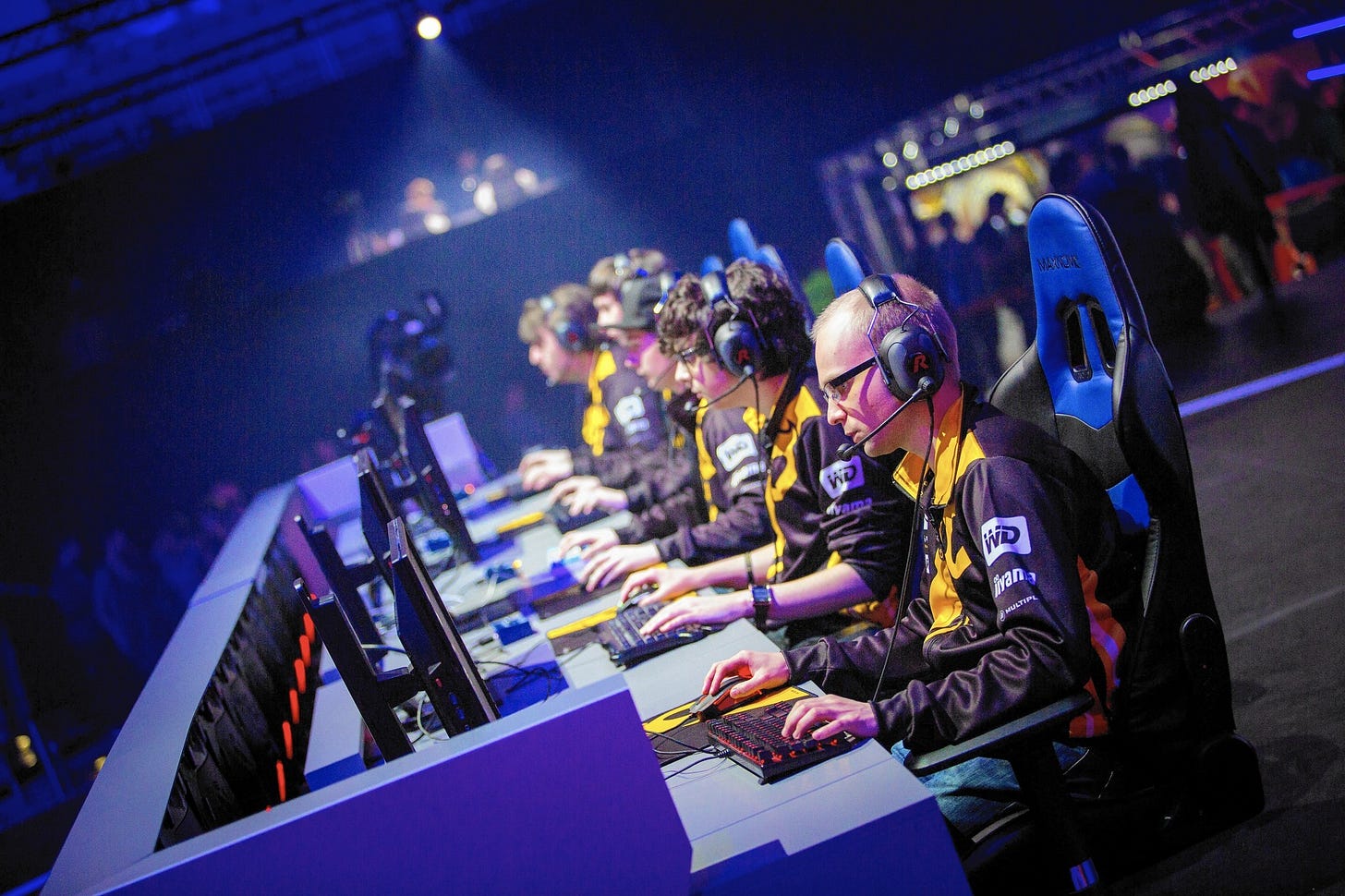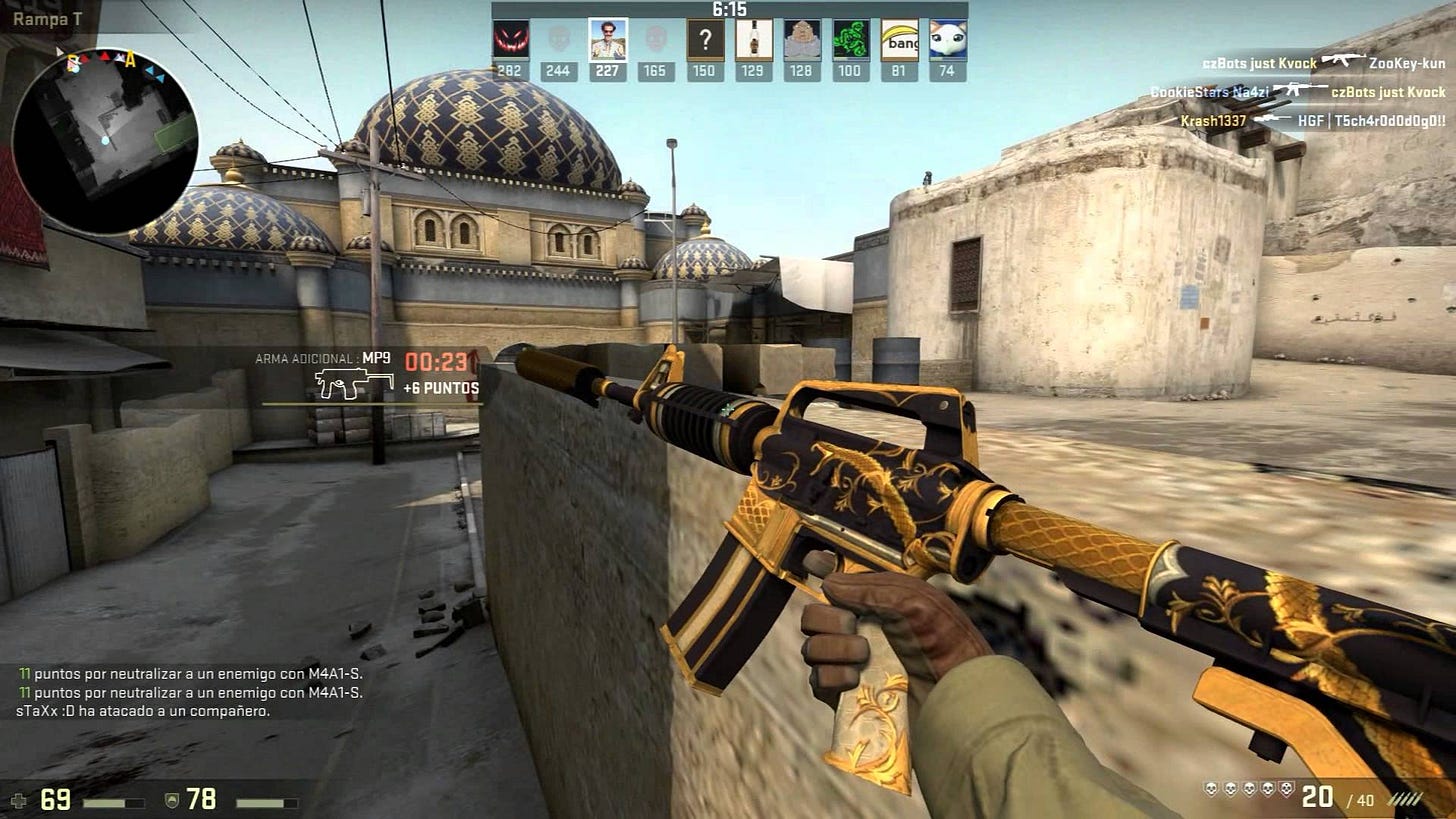“I’d wake up, I’d have my first of probably ten cups of coffee, sit on the computer, try to find a space in time where I go to the bathroom. Play, play, play, play, play. Maybe get something to eat. A few hours of sleep, rinse, and repeat.” That’s how Samantha Brito e Cunha (known as Beauvillain behind the keyboard) described her daily routine as an amateur gamer, clocking in at least 12 hours of Counter-Strike per day, for five or six years. Her diehard commitment to the Esport propelled her and an all-female team into the global top ten. Now retired from playing professionally, she takes us on a retrospective journey behind the scenes of the gaming world.
“For a lot of gamers, you have already burnt out and you don’t realize it. And then you just keep extending that burnout over a significant amount of time,” she says. “You don’t really know when to stop until somebody in your life tells you or tries to talk to you about it.”
Among the stereotypes in popular culture, gamers are notorious for unhealthy habits. At the highest levels of commitment, the demand for micro-level improvements through near-constant practice is extremely high. “Even if you’re playing 14 hours a day, there’s somebody playing 18 hours that night. Or there’s a competitor that’s playing for 2 days.”

The time commitment required to improve reaction times by nanoseconds over an opponent and to master the teamwork required to win the game means that elite-level gamers often end up sacrificing their physical and mental health for in-game achievements. Gaming is often thought of as a male-dominated, sexist environment of bad dietary choices and little physical exercise that has historically been plagued with aggressive, destructive behaviors such as harassment, bullying, and swatting (a dangerous illegal prank, when a bad actor makes a hoax call to an emergency number to send heavily armed law enforcement to a certain location—such as someone’s home, a school, shopping mall or the airport).
The embodiments of these stereotypes exist and Samantha can testify to having gamed alongside them. But she’s quick to point out that most online environments in which strangers communicate are toxic, and the phenomenon is not unique to the gaming world. She says the toxicity is often thoughtless, coming from a place of insecurity and misplaced emotion, and is a reflection of the sexism and negativity that exists in society at large.
“People are really toxic online. So men experience also an obscene amount of toxicity towards them as well, but with women, all it takes is for you to say ‘hello’ online to be subjected to that kind of toxicity.”

Human connections
Samantha is keen to emphasize that pockets of goodness and kindness exist within the space, offering havens of support and friendship amidst the swirling terabytes of escapism, adrenaline, and outbursts of emotion.
The passion and skill Samantha developed for the game took her from a casual gamer to the elite level as one of the top-ranked Counter-Strike players. She captained a female team to 6th in the global ranking. Despite the difficulties she faced as a woman in a historically male-dominated industry, looking back on her gaming career, she concludes that “it gave me so much more than it ever took away.”

The challenges she faced to create a safe gaming space were greatly outshined by the relationships she forged with the gamers she met in the community. “Getting to meet people that I never would have met before in my life if I hadn’t been able to connect online with them. All of a sudden I’m meeting people from Serbia, from these little towns that I would have never been able to get to know otherwise. It was eye-opening to get to know more of the world from that perspective. And I think that still today is one of the best qualities of gaming.”
From her female colleagues who use voice changers to participate in matches with men’s voices, to the suicides of friends caused by bullying and harassment, “the building blocks of Esports came from a really unhealthy place, and that’s what we’re evolving from. [We are] countering how it was built and optimizing it for health reasons.”
Samantha explains that to shield herself from negativity, she created a safe environment for herself and her peers to play in. By forging distant friendships across the globe over time, she formed a community of kind, well-intentioned gamers who treated each other with respect. She minimized the impact of toxic behavior by selectively engaging with people she found to share her values.
Women gamers
If you think women gamers are a small minority of total gamers, think again. It may have been the case a few decades ago, but in 2023, 47% of console video game players in the United States were women, and in China, 45% of total gamers were female.
Propensity for addiction
There are more and more efforts within the industry to combat bad habits and behavior, but the “global gaming operators remain largely self-regulated with minimal government regulation.”
Because oversight to constrain profit-seeking motives that exploit mechanisms of addiction is not in place in the industry, “major game developers, including Activision and Electronic Arts, created patents to use player data with the objective of selling more products and/or keeping players engaged in the game for longer periods. These patents, along with other in-game features, incentivize players to play games for longer, more frequently, and spend greater amounts of money than they otherwise would have.”
Samantha bore witness to the power of these features, spending hours engaged in CounterStrike’s immersive environment. “Because it is so highly addictive […] it’s very draining.” It’s easy for people to get lost in the game, she says, “especially if they’re avoiding themselves and avoiding their life.”
“Internet Gaming Disorder” was recently added to the Diagnostic and Statistical Manual for Mental Disorders (DSM-5), and the World Health Organization has included gaming disorder in the 11th Revision of the International Classification of Diseases (ICD-11). It is defined in ICD-11 as “a pattern of gaming behavior characterized by impaired control over gaming, increasing priority given to gaming over other activities to the extent that gaming takes precedence over other interests and daily activities, and continuation or escalation of gaming despite the occurrence of negative consequences.”

Positive change
Organizations like Women in Games and The Healthy Gamer Foundation are educating gamers on how to better manage what Samantha calls the “dopamine explosions that make you feel amazing.” Take This is an organization set up specifically to “decrease the stigma, and increase the support for, mental health in the game enthusiast community and inside the game industry.” Safe in Our World wants to “create and foster worldwide mental health awareness within the video game industry.”
With the advent of support organizations, there has been widespread recognition that the love of gaming has pushed a significant number of people into darkness beyond their control. Samantha was part of the wave of gamers that recognized that healthy lifestyle habits are not only advantageous for real life, but they “make you better” at playing video games. Swapping caffeine and pharmaceutical uppers for sleep, vegetables, and exercise, players are starting to recognize the value of treating their bodies well so they can perform their digital roles better.
After years of extreme demands on the bodies of gamers, the recognition that poor physical health habits hinder in-game performance has prompted elite-level gamers to seek out solutions. “It hasn’t been until recently that we’ve had an injection of sports psychologists and health and fitness coaches offered in the professional team space,” says Samantha.
And entering the space as a female has also never been easier. “Now, thankfully, there are a lot more women role models in the scene in comparison to before.” Samantha hopes to inspire young women to pursue gaming with a heavy emphasis on the self-care and discipline that are necessary. She hopes that gamers will seek out moderation between real and digital life. She certainly doesn’t recommend against gaming altogether, but cautions against the ease with which addiction sets in, the excessive sacrifice of time, and the crucial role of physical activity in maintaining physical and mental health.
Samantha believes there’s a healthy ratio to achieve of life spent behind computer screens and life lived connecting with other people in the physical world and spending time outdoors, “touching grass.” “Everybody that connects to millions of people, we have a responsibility to share the realities of what can go wrong. There are certain things biologically that we’re not getting [with gaming]. It really is all about balance.”








Share this post